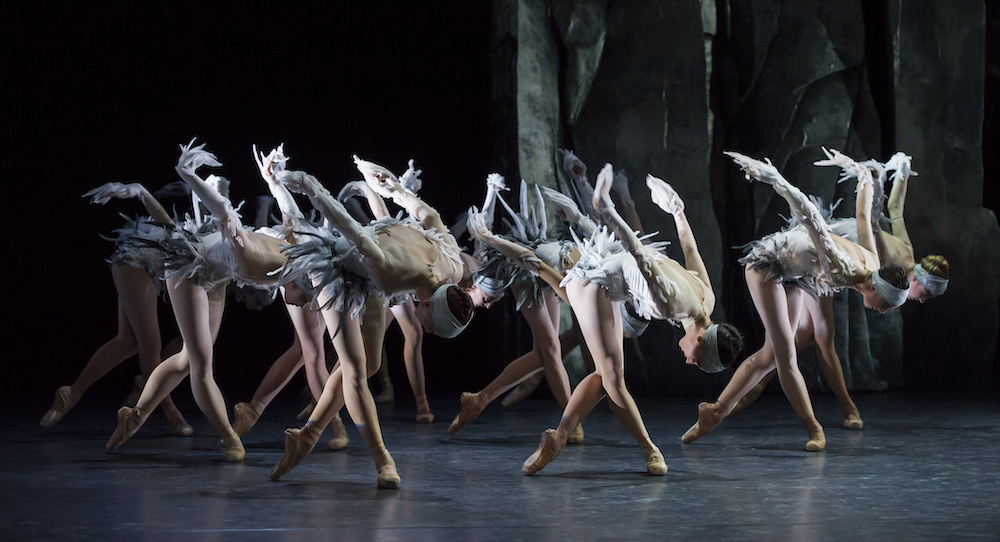The Australian Ballet will be collaborating with the Ballets de Monte-Carlo to produce the Australian premier of Jean-Christophe Maillot’s LAC. This is a modern, erotic and darker interpretation of the classic Swan Lake ballet, infused with more psychological drama than a mythical fairy tale.

Les Ballets de Monte-Carlo’s ‘LAC’. Photo by Alice Blangero.
The renowned Ballets de Monte-Carlo will be bringing its international performing troupe of approximately 50 dancers to stage in LAC, billed as a postmodernist version of Swan Lake which premiered in 2011 in the Grimaldi Forum. It has since toured the world, and similarly to Matthew Bourne’s Swan Lake, has created much discussion and buzz around how traditional classical ballets can be re-interpreted.
According to France’s Le Figaro, “This version of Lake is a turning point in the history of dance, a soaring feat of almost lyrical proportions, with room still for restraint and nuance. It will undoubtedly remain a dazzling memory for all.”
Les Ballets de Monte-Carlo has forged a name for itself as a modern ballet company that is prepared to create works that transcend traditional boundaries, explore modern themes and engage with contemporary dance audiences.
This relatively new company has been fully operational since 1985; however, the company traces its spiritual and historical roots to Sergei Diaghilev’s Ballets Russes, which first performed in Paris for the very first time in 1909. Diaghilev’s historical ground-breaking tour saw traditional ballets engaging with avant-garde modernist artistic movements to shocking effect, giving rise to ballet’s revolutionary modernist era.

Les Ballets de Monte-Carlo’s ‘LAC’. Photo by Alice Blangero.
Diaghilev established a creative workshop in the Principality of Monaco, which he operated until his death in 1929. Several choreographers attempted to revive the company with limited success with the company dissolving in 1951. The rebirth of Ballets de Monte-Carlo is due to the patronage of HRH Princess of Hanover (Princess Caroline of Monaco) who wanted to re-establish ballet and give dance pre-eminence as part of Monte Carlo’s cultural heritage. In 1985, the new company was established with Ghislaine Thesmar and Pierre Lacotte as directors, with an estimated annual nine million Euro budget from the House of Hanover.
The company is now thriving with over approximately 50 international dancers, a dance academy – the Academie Princesse Grace – and has, since 1995, hosted an annual dance festival in the Monaco Dance Forum.
Much of this growth and expansion was due to the appointment of Jean-Christophe Maillot as Creative Director of Ballet Monte Carlo in 1993. After time spent with John Neumeier at the Hamburg Ballet, as well as The Ballet du Grand Théâtre de Tours, Maillot transformed Ballets de Monte-Carlo into a mature, creative and prolific company, creating over 40 new ballets in a 20-year period.
The company’s current repertoire consists of works by the Ballet Russes, Balanchine, Maillot’s original works, as well as commissioning a number of works by guest artists including Jiří Kylián, Sidi Larbi Cherkaoui and Goyo Montero.
Maillot’s creativity overwhelms the strict borders of classical ballet and incorporates artistic influences and ideas from modern dance, circus, theatre, opera and literature. The company describes Maillot’s creativity as “neither classical nor contemporary and not even in between the two. Jean-Christophe Maillot refuses to adhere to one style and designs dance as a dialogue, where tradition on pointe shoes and the avant-garde are no longer mutually exclusive.”

Les Ballets de Monte-Carlo’s ‘LAC’. Photo by Alice Blangero.
Maillot engaged the writer Jean Rouaud to reimagine the classical Swan Lake tale of “good and evil” into a dark entangled tale of Machiavellian maternal love. Maillot keeps the original Tchaikovsky score, in particular the sublime Second Act, but reconstructs the choreography into a tale that blurs the lines between good and evil, humanity and animality. It keeps the original idea of good and evil, which is in us all, transforming the swans into cruel and aggressive animals.
This is assisted by Winter Olympics’ designer Philippe Guillotel, who deconstructs the tuille in the tutus to bring the story closer to the themes of betrayal, lust and the nearness of our animal instincts/origins. As Maillot explains in an interview with Monaco Info, “The world has changed a lot since the 19th Century; it is more cruel, less romantic. The challenge now is how to bring these emblematic works back to life, simultaneously keeping the essence and traditional form while infusing it with a strong contemporary feel.”
To this end, Maillot’s LAC remains the story of an impossible love but is also a true modern ballet with the aesthetic codes of today.
Les Ballets de Monte Carlo will present LAC at Arts Centre Melbourne from 27 June – 6 July. For tickets, visit australianballet.com.au/the-ballets/lac.
By Elizabeth Ashley of Dance Informa.

















